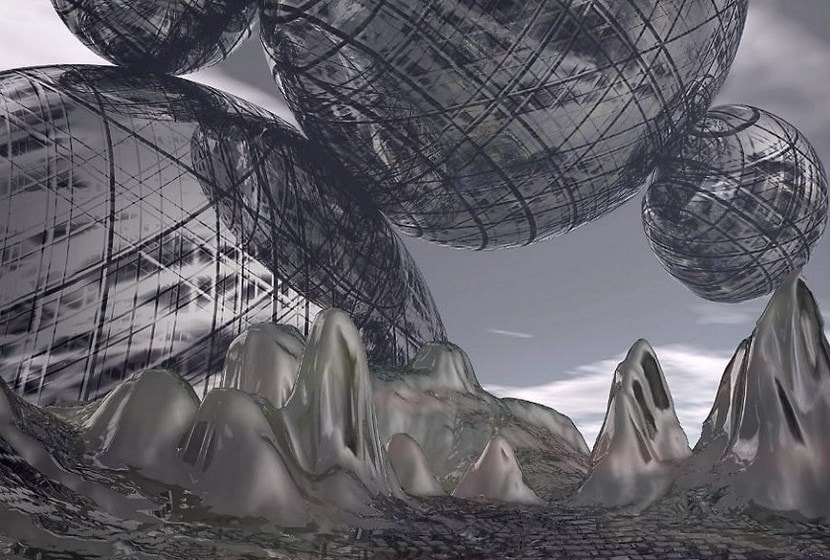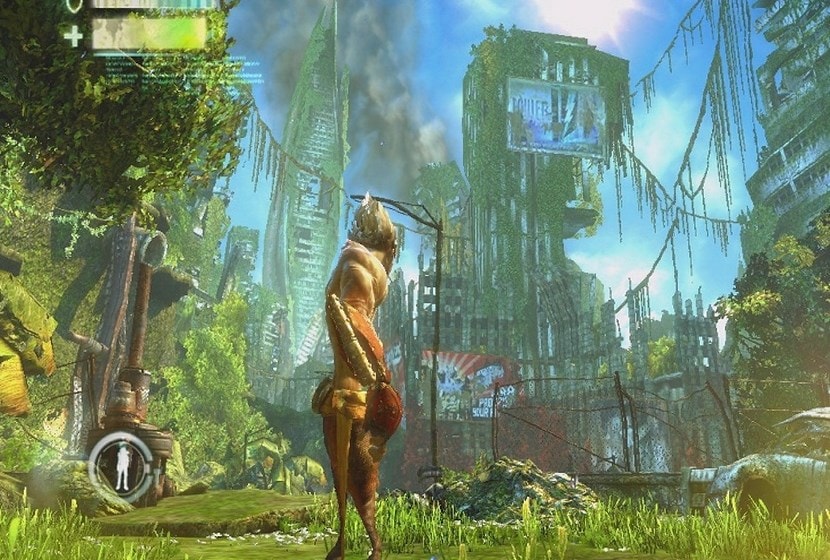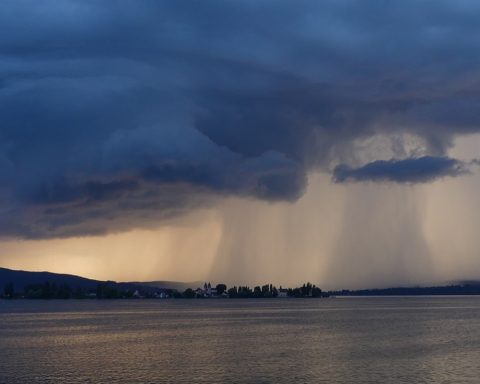The progress of science today leaves our societies with the feeling of being at a crossroads: technological breakthroughs are announced (nanotechnologies, synthetic biology, etc.) at a time when our models of economic growth seem destined to come up against the physical and environmental limits of the planet. At a time when there is increasing debate about the most desirable development model, how can science fiction and the way it looks at our society enrich the debate?
This analysis explores the different ages of science fiction, from its beginnings to the present day, and attempts to shed light on the scientific and socio-economic context of each era, using a chronological approach. This is the third part.
Part Three: From World War II to the Late 1970s / The Great Fears of Postmodern Society
1 - The conquest of space gives a new lease of life to space operas
 The post-World War II era is strongly marked by the "Cold War"...(17) which the American and Soviet blocs are competing with each other, particularly in the fields of nuclear weapons and the conquest of space. The technological advances of this period leave their mark on people's minds: the launch of the Soviet Sputnik satellite in 1957, Yuri Gagarin's voyage into space in 1961, man's first step on the Moon in 1969. At the same time, intensive listening to space was made possible from 1960 onwards with the help of a huge radio telescope installed in Virginia, later replaced by the current "Green Bank Telescope", the largest in the world.
The post-World War II era is strongly marked by the "Cold War"...(17) which the American and Soviet blocs are competing with each other, particularly in the fields of nuclear weapons and the conquest of space. The technological advances of this period leave their mark on people's minds: the launch of the Soviet Sputnik satellite in 1957, Yuri Gagarin's voyage into space in 1961, man's first step on the Moon in 1969. At the same time, intensive listening to space was made possible from 1960 onwards with the help of a huge radio telescope installed in Virginia, later replaced by the current "Green Bank Telescope", the largest in the world.
The access to new planets and the meeting of new peoples take on an almost tangible character at this time. (18). Technique has sort of caught up with fiction. The offbeat and light tone of the fanzines of the inter-war period gave way to serious space operas that borrowed often rigorous elements and sophisticated laboratory equipment from science. Although 2001, theSpace Odyssey (1968) is not strictly speaking in this genre, Stanley Kubrick's film benefited from the expertise of Arthur C. Clarke, who also wrote the screenplay and the novel from which the film is based. Clarke, a radar specialist during the Second World War and inventor of the geostationary satellite concept, is the author of the screenplay and the novel on which the film is based. (19)This brought seriousness and scientific credibility to the work. The idea of the radio transmitter and relay in orbit was also introduced.
 This new current of space operas inevitably combines the discovery of space with the search for the origins of the human species and the fear of the unknown. 2001, theSpace Odyssey (1968) and Solaris by Andrei Tarkovski (1972) are part of these questions. In this last work, the planet Solaris and its mysterious manifestations evoke the encounter and the fear of the other. The theme of understanding others, the universe and oneself is also one of its main threads.
This new current of space operas inevitably combines the discovery of space with the search for the origins of the human species and the fear of the unknown. 2001, theSpace Odyssey (1968) and Solaris by Andrei Tarkovski (1972) are part of these questions. In this last work, the planet Solaris and its mysterious manifestations evoke the encounter and the fear of the other. The theme of understanding others, the universe and oneself is also one of its main threads.
Other works of anthology appear at the same time. These include The Cycle of Robots then The cycle of Foundation of Isaac Asimov, Star Wars (1977) by George Lucas, or The Planet of the Apes by F.J. Schaffner (1968). All of them invent possible worlds in space or on other planets and address questions of a philosophical, metaphysical and humanistic nature.
2 - Technology gives man the ability to self-destruct: sf apocalyptic and post-apocalyptic
 Parallel to the enthusiasm linked to the conquest of space and the space operas, an awareness of man's capacity for self-destruction is developing. The revelation of the images of Hiroshima and Nagasaki and of the Shoah, declassified at the end of the 1960s, deeply anchored the idea that human folly can lead to genocide with means on an unprecedented scale.
Parallel to the enthusiasm linked to the conquest of space and the space operas, an awareness of man's capacity for self-destruction is developing. The revelation of the images of Hiroshima and Nagasaki and of the Shoah, declassified at the end of the 1960s, deeply anchored the idea that human folly can lead to genocide with means on an unprecedented scale.
For the first time, man "sorcerer's apprentice" created a weapon of mass destruction, and the fear of a nuclear apocalypse, against the backdrop of the Cold War, underlies many of the science fiction works of that time. In 1954, the Japanese film GodzillaTomoyuki Tanaka's "The Lizard", which depicts a huge prehistoric lizard awakened from its ancestral sleep by nuclear explosions on the surface and endowed with overcapacities following its irradiation. In the United States, Stanley Kubrick made his famous film in 1964. Doctor Folamour or: how I learned to stop worrying and to love the bomb, a satire of American-Soviet relations, whose failure led to the nuclear holocaust.
 In France, the postapocalyptic novel Malevil (1972), by Robert Merle, describes how a group of survivors of an explosion attempt to rebuild a human society. While the fear of the apocalypse is a recurring theme in science fiction, the horrors of World War II are shifting apocalyptic narratives from man's indirect responsibility - until now, end-of-the-world narratives have involved divine punishment - to his direct responsibility. The PierThis short film, directed in 1962 by C. Marker, sets its plot in a world destroyed by a nuclear conflict.
In France, the postapocalyptic novel Malevil (1972), by Robert Merle, describes how a group of survivors of an explosion attempt to rebuild a human society. While the fear of the apocalypse is a recurring theme in science fiction, the horrors of World War II are shifting apocalyptic narratives from man's indirect responsibility - until now, end-of-the-world narratives have involved divine punishment - to his direct responsibility. The PierThis short film, directed in 1962 by C. Marker, sets its plot in a world destroyed by a nuclear conflict.
3 - The "New-Wave", awakening ecological awareness
 The double decade 1960-1970 was one of awareness of the finiteness of resources and the rise of ecological concerns. The environment enters the public debate: the first report of the Club of Rome (24) formalized the idea of "land limits" and raised concerns about a shortage of raw materials, which were exacerbated by the first oil shock in 1973. In 1974, the United Nations organised the first World Population Conference in Bucharest, bringing together not only experts but also government representatives to discuss the link between demographic pressure, unequal development and food insecurity. It was feared at the time that agricultural production would not be sufficient to feed the 6 billion or so people expected in the year 2000.
The double decade 1960-1970 was one of awareness of the finiteness of resources and the rise of ecological concerns. The environment enters the public debate: the first report of the Club of Rome (24) formalized the idea of "land limits" and raised concerns about a shortage of raw materials, which were exacerbated by the first oil shock in 1973. In 1974, the United Nations organised the first World Population Conference in Bucharest, bringing together not only experts but also government representatives to discuss the link between demographic pressure, unequal development and food insecurity. It was feared at the time that agricultural production would not be sufficient to feed the 6 billion or so people expected in the year 2000.
An article by Garrett Hardin (25) published in 1968, refers to the "tragedy of the commons" to refer to the over-exploitation of environmental public goods such as the climate, water and mineral resources, the diversity of animal and plant species, and so on. The expression, which has been criticized ever since but is still used today, will have a resounding impact in the scientific and then media communities.
Concerns about the state of the environment go beyond the sphere of environmental researchers and activists: they soon become of interest to the general public and acquire a cultural dimension. The New Age movement, a philosophy with religious overtones whose aim is to recreate a link between Man and Nature, appeared in England at the end of the 1960s and spread to the United States and the rest of Europe. These are the first steps of a global ecological consciousness.
The science fiction works of the time conveyed these concerns, refocusing on the Earth and on environmental concerns - this was known as the "New Wave" movement. New Wave literature explored the anguish of overpopulation and its corollaries: pollution and scarcity of resources. It takes up and illustrates, through extreme scenarios and sometimes shocking images, the critique of the logic of accumulation and irrational exploitation of natural capital induced by mass consumption, a subject of debate at the time.
 In 1962, biologist Rachel Carson published Silent SpringThe title refers to a spring when all the birds would have disappeared because of pesticides. This book raised awareness of environmental issues among a large part of the American public and contributed to the banning of the pesticide DDT in the United States in 1972. In the wake of this scientific work, an important "warning science fiction" developed in the 1960s.
In 1962, biologist Rachel Carson published Silent SpringThe title refers to a spring when all the birds would have disappeared because of pesticides. This book raised awareness of environmental issues among a large part of the American public and contributed to the banning of the pesticide DDT in the United States in 1972. In the wake of this scientific work, an important "warning science fiction" developed in the 1960s.
The spectre of nature's exhaustion takes shape in Do androids dream of electric sheep?(1966)(26) by P. K. Dick, where the Earth is a giant city with no natural spaces, in The Blind Herd (1972) where J. Brunner describes a polluted world, bathed in acid rain, or in the desert landscapes of The Planet of the Apes by P. Boulle (1963), emptied of its vegetation by man.
The FS of the 1960s and 1970s also explores the consequences of future overpopulation and, beyond that, imagines different systems to support promiscuity or ensure food security for part of the population. H. Harrison presents a nightmarish vision of the future in Green Sun (1966), which presents a world marked by overpopulation, climate change and loss of biodiversity, in which humans are reduced to consuming other humans in the form of an "artificial" food, the green sun. R. Silverberg shows a series of conurbations, vertical urban planning that provides space for agricultural production in The Urban Monads (1979). Finally, J. Brunner describes a society that lives on tranquilizers and oxygen masks and has chosen to use eugenic birth control in All in Zanzibar (1968).
 The time is also a time of questioning political governance systems and searching for alternative models to that of the modern western republic, in reflections inspired in particular by the Vietnam War. Several works of science fiction question the compatibility between ecology and democracy: is the latter capable of ensuring the preservation of natural resources for future generations, and thus the survival of humanity? How can such a system, which places the citizen at the centre of everything, impose obligations on this same citizen that are certainly in the interest of nature, but contrary to individual freedom? (27) The anticipation literature explores both ideal and utopian and tyrannical organizations: The Name of the World is Forest (1976) by Ursula Le Guin, an account of humanity's savage colonization of a planet, establishes a direct link between dictatorship, genocide and ecocide - in this case through deforestation.
The time is also a time of questioning political governance systems and searching for alternative models to that of the modern western republic, in reflections inspired in particular by the Vietnam War. Several works of science fiction question the compatibility between ecology and democracy: is the latter capable of ensuring the preservation of natural resources for future generations, and thus the survival of humanity? How can such a system, which places the citizen at the centre of everything, impose obligations on this same citizen that are certainly in the interest of nature, but contrary to individual freedom? (27) The anticipation literature explores both ideal and utopian and tyrannical organizations: The Name of the World is Forest (1976) by Ursula Le Guin, an account of humanity's savage colonization of a planet, establishes a direct link between dictatorship, genocide and ecocide - in this case through deforestation.
Previous article (Part Two)
(17) Note that the term "Cold War" was used by Orwell in 1945 in his article "You and the Atomic Bomb" (1945, in Tribune) and later used by Bernard Baruch, then Truman administration advisor (1947), and then by the journalist and intellectual Walter Lippmann.
(18) More recently, the film Contact (R. Zemeckis, 1997) thus depicts space listening through telescopes and the discovery of extraterrestrial civilizations.
(19) Arthur C. Clarke published the idea of a geostationary orbit in the journal Wireless World, October 1945.
(20) Napier S. (1993), "Panic Sites:The Japanese Imagination of Disaster from Godzilla to Akira," The Journal of Japanese Studies, vol. 19, n° 2.
(21) Shogunate refers to the regime in place in Japan from the twelfth to the nineteenth century, a feudal system ruled by dynasties of military leaders, the shoguns.
(22) In Minamata, in 1949, one thousand deaths were linked to mercury poisoning caused by discharges from a nearby factory.
(23) Japanese science fiction was indeed born with the novels of Jules Verne and H. G. Wells, which were very quickly introduced and translated in Japan (Around the World in 80 Days (1873), translated in 1878 by Kawashima Yunosuke; From the Earth to the Moon (1865), translated in 1880 by Inoue Tsutomu, etc.).
(24) Meadows D.H., Meadows D.L., Randers J. and Behrens W. (1972), The Limits to Growth.
(25) "The Tragedy of the Commons," Science, 162 (3859): 1243-1248. 1968.
(26) Novel that inspired the film Blade Runner (Scott, 1982).
(27 ) See Chelebourg, C. (2012), Les écofictions - Mythologies de la fin du monde, Les impressions nouvelles.












